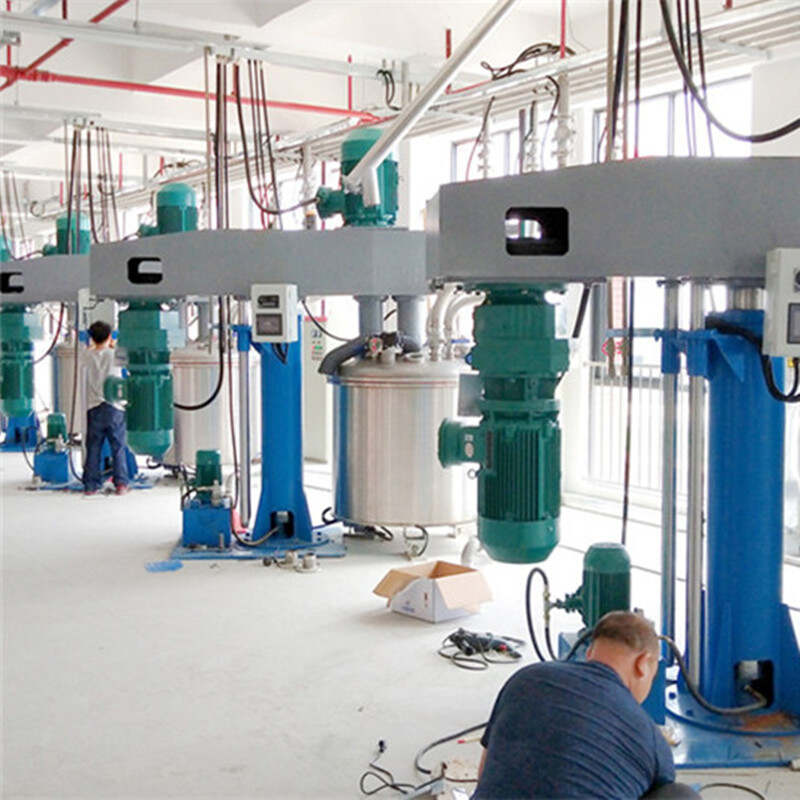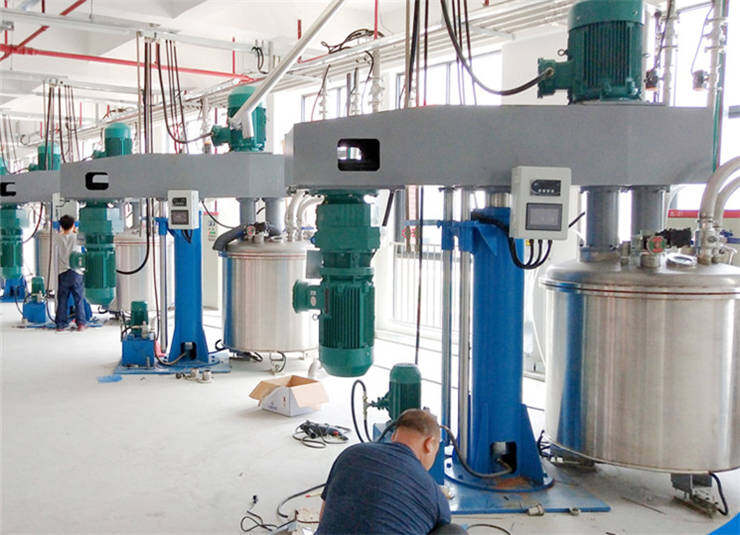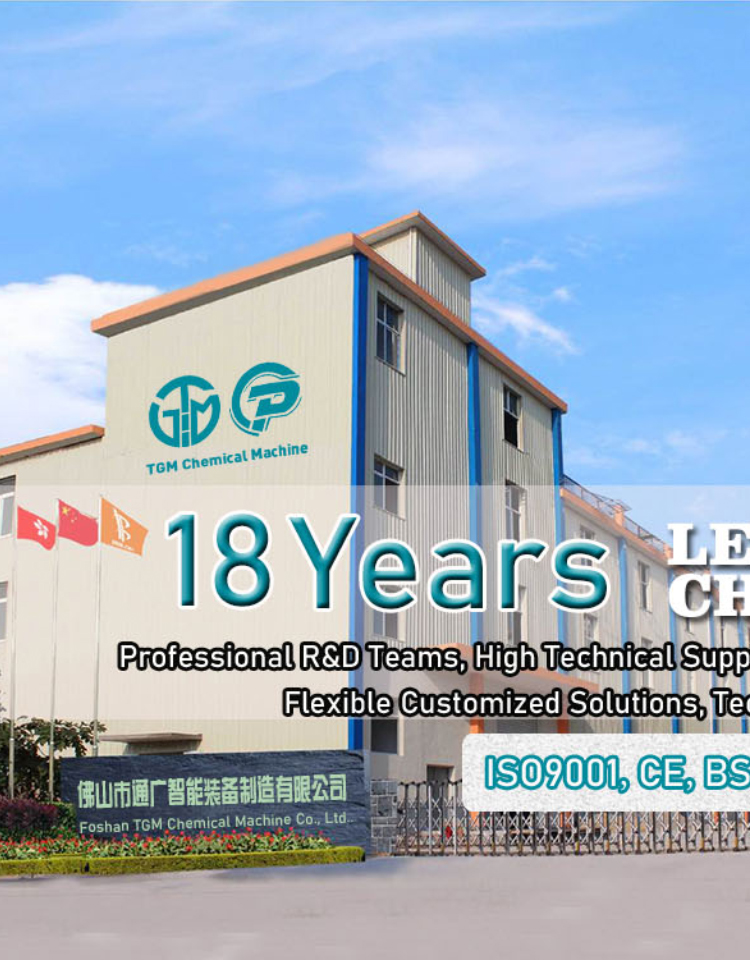Email cannot be empty
Password cannot be empty
Email format error
Email cannot be empty
Email already exists
6-20 characters(letters plus numbers only)
The password is inconsistent
Email format error
Email cannot be empty
Email does not exist
6-20 characters(letters plus numbers only)
The password is inconsistent


The Complete Guide to the Jet Ink Production Line
In the world of printing, ink production plays a pivotal role in ensuring high-quality, durable prints. Among the various types of ink production systems, the jet ink production line has gained significant popularity for its precision and efficiency in creating high-performance ink for inkjet printers. In this comprehensive guide, we will explore the various aspects of the jet ink production line, including its process, benefits, and best practices to ensure optimal results.
Whether you are new to ink manufacturing or seeking to upgrade your existing production capabilities, understanding the intricacies of the jet ink production line is key. This guide will also touch on its relevance in specific applications, such as large-scale printing and high-speed commercial printing, and examine the broader impact of this technology on the printing industry.
What is a Jet Ink Production Line?
A jet ink production line refers to a specialized system designed to produce ink for inkjet printing applications. Inkjet printing, due to its ability to print high-resolution images and text with ease, has become one of the most common methods used in commercial printing, office printing, and even personal printers. The production line is responsible for creating inks that work seamlessly with inkjet printers, ensuring optimal print quality and performance.
The production process for jet inks typically involves mixing pigment or dye with a base liquid to achieve the desired color, consistency, and fluidity. The final product must be formulated to meet specific requirements, such as compatibility with different printer heads, ink absorption, and drying times.
Key Components of a Jet Ink Production Line
To fully understand the workings of a jet ink production line, it is essential to look at the components involved in the process:
-
Pigment Dispersion and Mixing The first step in the production line involves dispersing pigments or dyes into the liquid phase. Pigment dispersion is a critical step, as it ensures that the pigments are finely and evenly distributed, which directly impacts the quality of the final ink. The mixing process needs to be carefully controlled to achieve the right consistency.
-
Ink Grinding After pigment dispersion, the ink is passed through a grinding machine that further breaks down the pigment particles. This step ensures that the ink has the correct particle size, improving its performance and ensuring smooth flow through inkjet printheads.
-
Filtration and Quality Control Filtration is another essential step in the production line. Any particles or impurities must be removed to ensure that the ink flows consistently through the printer without clogging the printhead. Quality control testing is conducted to ensure that the ink meets various standards such as viscosity, pH level, and drying time.
-
Final Mixing and Blending The final stage of the production line involves blending the ink to ensure uniform consistency before it is packaged for distribution. This may involve adding additional components such as stabilizers, surfactants, and other chemicals to enhance the ink’s performance, color quality, and shelf life.
How Does a Jet Ink Production Line Benefit Manufacturers?
Investing in a jet ink production line offers several advantages for ink manufacturers and businesses in the printing industry. Here are some of the key benefits:
1. Efficiency and Scalability
The production line is designed for high-efficiency production. Once set up, the system can produce large quantities of ink in a relatively short amount of time, making it ideal for manufacturers looking to scale up their production. This streamlined process reduces manual labor, increases output, and ensures consistent quality in every batch of ink.
2. Customization
A production line allows for the customization of ink formulas to meet specific customer requirements. This can include adjustments to the ink’s color, viscosity, drying time, and other performance characteristics. Customization is particularly beneficial for businesses that serve niche markets or have unique printing needs.
3. Improved Print Quality
By using the best ingredients and precisely controlling the production process, the production line can create ink that delivers superior print quality. This is crucial for industries such as commercial printing, packaging, and graphics, where the color accuracy and resolution of printed materials are vital.
4. Cost-Effective Production
With automated processes and optimized workflows, the production line minimizes waste and reduces operational costs. Manufacturers can produce ink in bulk, reducing the cost per unit and improving the overall profitability of ink production.
Printing Screen Inks Production Line: A Related System
In addition to the jet ink production line, there are other specialized production lines for different types of printing inks. One such system is the production line, which is designed to create inks for screen printing applications. Although different in terms of composition and application, both production lines share some common principles, such as pigment dispersion and quality control.
The printing screen inks production line focuses on creating inks that can be used in screen printing presses, which are commonly used for textiles, posters, and signage. Screen printing inks are thicker and more viscous than jet inks and may require different equipment and techniques to produce. However, the goal is to ensure consistency, color accuracy, and performance for the end-user.
The Production Process: Step-by-Step
Understanding the production process of a jet ink production line is essential for optimizing the system and ensuring that each batch of ink meets the desired specifications. Here's a breakdown of the key stages:
1. Pigment Preparation
Pigment preparation involves selecting the right colorants for the ink formulation. Depending on the desired ink color, manufacturers may need to mix different pigments to achieve the correct hue. This step also includes ensuring the pigments are compatible with the base liquid and solvents.
2. Pigment Dispersion
Once the pigments are selected, they are mixed with solvents and resins in a dispersion mill. The goal here is to break down any pigment agglomerates and evenly distribute the pigment particles in the liquid medium. The dispersion process ensures that the pigment remains evenly suspended in the ink, preventing settling or clumping.
3. Grinding and Refining
Following pigment dispersion, the ink is subjected to grinding and refining processes. This step helps to achieve the desired particle size and viscosity, ensuring that the ink flows smoothly through the printhead without clogging.
4. Additives and Stabilization
To enhance the performance of the ink, various additives are incorporated. These can include stabilizers to improve shelf life, anti-foaming agents to reduce air bubbles, and surfactants to optimize wetting properties. The final formulation is then mixed thoroughly.
5. Quality Control and Testing
After the ink is produced, it undergoes a series of tests to ensure it meets quality standards. These tests include viscosity measurements, drying time evaluations, and tests for color consistency and opacity. The ink is also tested for compatibility with different printer heads and paper types.
6. Packaging and Distribution
Once the ink has passed all quality checks, it is packaged in various formats, such as bottles, cartridges, or bulk containers, depending on customer needs. The ink is then ready for distribution to clients in various industries.
How to Optimize Your Jet Ink Production Line
To ensure that your jet ink production line runs smoothly and efficiently, there are several best practices you should follow:
1. Invest in Quality Equipment
The quality of the machinery in your production line is crucial to the overall success of the process. Invest in high-quality mixing, grinding, and filtration equipment to ensure optimal results.
2. Regular Maintenance
Regular maintenance of your production line is essential to avoid costly breakdowns and ensure that the machinery operates at peak efficiency. Establish a maintenance schedule and keep track of all machine performance metrics.
3. Optimize Formulation Adjustments
During the ink production process, it is essential to monitor the formulations closely. Small adjustments to the viscosity or pigment dispersion can significantly impact the final ink product. Use advanced software and data analytics to track the formula and make real-time adjustments.
4. Monitor Environmental Conditions
Temperature, humidity, and air quality can all affect ink production. Ensure that your production facility maintains optimal environmental conditions to achieve consistent results.

Conclusion
The jet ink production line is a vital system for the production of high-quality ink used in inkjet printing applications. By understanding the components and processes involved in the production line, manufacturers can optimize their operations for efficiency, quality, and cost-effectiveness. Furthermore, when coupled with best practices, a well-designed jet ink production line can yield inks that deliver superior print quality, making it a valuable investment for businesses in the printing industry.
As the demand for high-performance inks continues to grow, particularly in commercial printing and large-scale applications, the production line will play an increasingly important role in meeting these needs. Whether you are manufacturing ink for inkjet printers or looking to expand your product line to include more specialized inks, investing in a reliable, efficient production line will ensure your business remains competitive in the evolving market.

